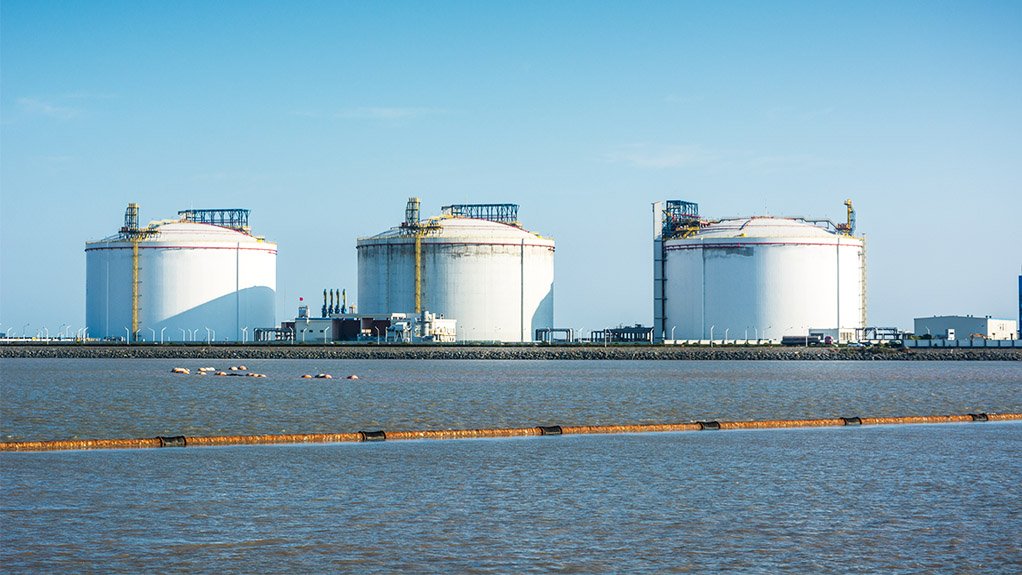Cryogenics technology, expertise crucial in future gas economy
Cryogenics technology and expertise are becoming increasingly important as South Africa plans on leaning into using liquefied natural gas (LNG) as a major source of energy, Howden senior application engineer Pieter Swart said at mine ventilation solutions developer Howden’s Technology Day, hosted at Mintek, in Johannesburg on April 17.
Cryogenics also played a crucial role in the handling of helium, which played a critical role in scientific research, medical technology, high-tech manufacturing, space exploration and national defence initiatives, he added.
“The study of these gases and their behaviour at extremely low temperatures has become a vital field, driving innovation across various industries,” he said.
He presented a hybrid helium and LNG liquefication system that has been developed by Howden and its parent company Chart, discussing the key stages of the specific cryogenic operation, including feed pretreatment and compression, which are both essential for optimising the efficiency and purity in the liquefication process.
Swart noted that this technology was important because helium was commonly harvested along with LNG, owing to the fact that it occured abundantly in natural gas reservoirs, although its concentration varied depending on the specific geology of the deposit.
During the liquefaction process, LNG is cooled to very low temperatures, causing it to condense into a liquid state, thereby reducing to about a six-hundredth of its original volume, making it more manageable for storage and transportation.
This process also allows for the separation and collection of other gases present in the natural gas stream, which often includes helium.
Helium is then separated from the LNG stream through cryogenic distillation, a method that takes advantage of the differences in boiling points between helium and other gases.
Once separated, the helium can be further purified and processed for various industrial applications.
Swart provided technical insights into the design and operation of the LNG and helium liquefication technology, laying out the complex engineering systems at play that enable the achievement of the ultra-low temperatures necessary for liquefying both LNG and helium gas, which occurs at -62 °C and -269 °C, respectively.
He explained how, once it is separated from the LNG, the warm, pure helium feed stream is compressed to achieve the necessary pressure for liquefication, whereafter the pure, high-pressure helium feed stream enters a vacuum cold box where it is cooled by liquid nitrogen and recycle refrigeration.
Thereafter, recycle refrigeration is provided by compressing a separate helium recycle stream and expanding it in one or more turboexpanders. The refrigerated helium feed stream is then expanded in a reciprocating expansion engine to produce a two-phase helium stream, which flows into a storage tank where the liquid and vapour are separated.
The liquid helium remains in the storage tank, while the cold helium vapour is returned to the cold box where it is used to cool the helium feed stream.
Swart said a complete helium liquefaction system typically includes recycle and feed compressors, oil removal systems, a vacuum cold box containing heat exchangers, 80 K and 20 K adsorbers, turboexpanders and reciprocating expanders, valves and instruments, product storage, distribution and trailer loading systems and control and analytical systems.
Swart noted that helium could be safely vented into the atmosphere, as it is classified as a noble gas, which means it is chemically inert and therefore harmless to the environment.
“However, there is value in it, so you will want to use it for yourself,” he said, noting that this was where Howden’s technology could help gas producers maximise value.
Comments
Press Office
Announcements
What's On
Subscribe to improve your user experience...
Option 1 (equivalent of R125 a month):
Receive a weekly copy of Creamer Media's Engineering News & Mining Weekly magazine
(print copy for those in South Africa and e-magazine for those outside of South Africa)
Receive daily email newsletters
Access to full search results
Access archive of magazine back copies
Access to Projects in Progress
Access to ONE Research Report of your choice in PDF format
Option 2 (equivalent of R375 a month):
All benefits from Option 1
PLUS
Access to Creamer Media's Research Channel Africa for ALL Research Reports, in PDF format, on various industrial and mining sectors
including Electricity; Water; Energy Transition; Hydrogen; Roads, Rail and Ports; Coal; Gold; Platinum; Battery Metals; etc.
Already a subscriber?
Forgotten your password?
Receive weekly copy of Creamer Media's Engineering News & Mining Weekly magazine (print copy for those in South Africa and e-magazine for those outside of South Africa)
➕
Recieve daily email newsletters
➕
Access to full search results
➕
Access archive of magazine back copies
➕
Access to Projects in Progress
➕
Access to ONE Research Report of your choice in PDF format
RESEARCH CHANNEL AFRICA
R4500 (equivalent of R375 a month)
SUBSCRIBEAll benefits from Option 1
➕
Access to Creamer Media's Research Channel Africa for ALL Research Reports on various industrial and mining sectors, in PDF format, including on:
Electricity
➕
Water
➕
Energy Transition
➕
Hydrogen
➕
Roads, Rail and Ports
➕
Coal
➕
Gold
➕
Platinum
➕
Battery Metals
➕
etc.
Receive all benefits from Option 1 or Option 2 delivered to numerous people at your company
➕
Multiple User names and Passwords for simultaneous log-ins
➕
Intranet integration access to all in your organisation





















